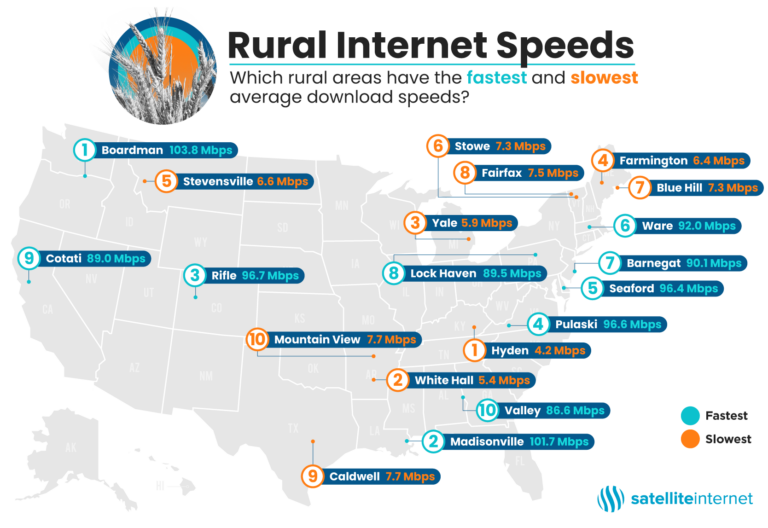- Hyden, KY (4.2 Mbps): Rural area with the slowest average internet speed in the US
- Boardman, OR (103.8 Mbps): Rural area with the fastest average internet speed in the US
- 45.9 Mbps: National average for all rural speed tests completed
- 592: Number of rural US cities ranked
According to the FCC’s 2020 Broadband Deployment Report, 22.3% of rural Americans don’t have access to internet download speeds of at least 25 Mbps (which is the recommended speed for working from home and online schooling).4,5 And the numbers are even worse on Tribal lands, where 32.1% of Americans don’t have access to internet speeds of 25 Mbps.5
Yet in metropolitan areas, only 1.5% of Americans lack access to these same speeds.5 Rural America’s lackluster internet speeds contribute to the homework gap and a lower percentage of college graduates when compared to Americans living in metropolitan areas.6,7
The most common reason for slow rural internet is that it’s expensive for internet providers to expand and update infrastructure, so it’s less financially motivating to expand to rural areas with fewer people.
To counteract this, the US government is trying to incentivize wider broadband rollouts to underserved areas through programs like the Connect America Fund. Satellite internet providers like Viasat and HughesNet help bring internet access to rural areas, and next-generation satellite provider Starlink (by SpaceX) will benefit rural communities with faster speeds and lower latency in the near future. See what's in store in this year's guide for the best rural internet options.
